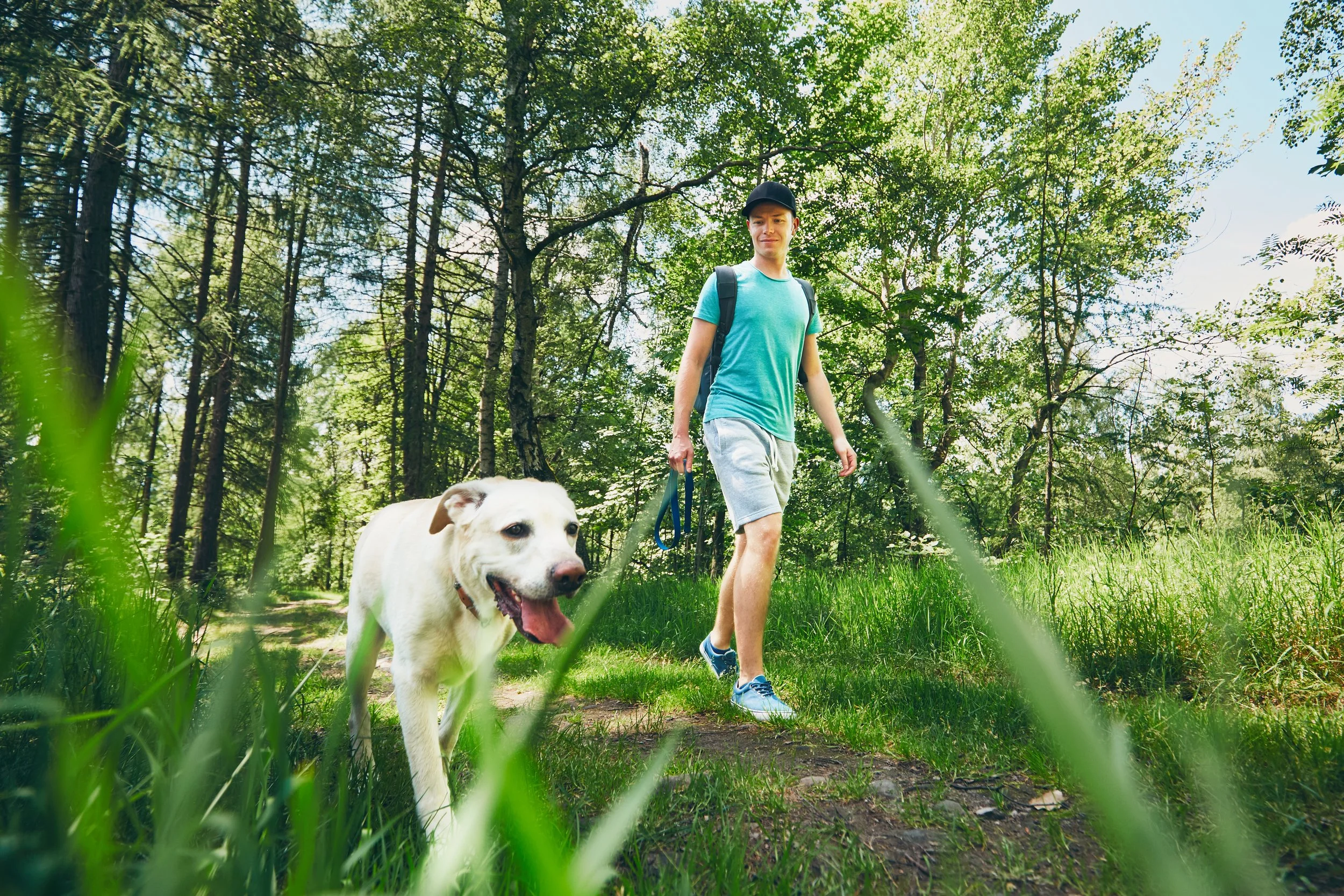Reduce Your Pet's Carbon Footprint
Pets are a huge part of our world, and we love them for all the joy and unconditional love they bring to us. However, when it comes to the environment, we might question how large our pet’s carbon footprint is and how we can work to reduce it. There are simple solutions to help significantly reduce your pet's environmental impact. Minimize your pet’s carbon footprint with these helpful ideas.
Experience the Envirnment
One of the best ways to enjoy the environment is to experience it in a healthy and respectful way. Get outside with your pet and burn some calories by strolling through your neighborhood or hiking through the woods. Adding a 15-minute regimen to your day can help manage stress for you and your dog. Teach your pets to respect our environment and always remember the Leave No Trace Principles on your adventures. Always remember to leave trails better than you found them.
repurpose Doggie Bags
It's time to face the facts: your pet poops. Though it isn't always convenient, it is especially important that you pick it up. Pet waste is one of the leading causes of your pet’s negative impact on the planet and carbon pawprint. One of the best ways to combat this is by using plastic bags you already have from the store or by using biodegradable bags. Truly responsible owners always have a bag on hand.
Compost Pet Waste
If you plan to avoid bags all together, composting your pet’s waste in another option. You do not want to contribute the waste to a compost pile headed for your garden. The waste from dogs and cats can contain pathogens that are not safe for human consumption. You can safely compost an herbivorous pet’s waste in your garden compost (rabbit, hamster, guinea pig, etc.). If you choose to compost your carnivorous pet’s waste, set up a separate compost system for it that will reduce the volume of your pet’s waste by at least 50 percent, according to Green America. In some countries, like the US and the UK, you can even hire pet waste removal companies to dispose of the pet’s waste.
Eco Friendly Toys
Play time is the perfect time to be creative. You can repurpose used materials around your home to make unique toys for your pet. An effortless way to find ways to create toys is by simply typing “DYI dog toys” in your Google search bar. If you have a cat, you will type “DYI cat toys’ and so forth. If you already have a lot of toys, take a step back from more purchases, often pets have favorite toys and the rest can go neglected. To save some space, you can also wash your already used toys and donate them to your local animal shelter or rescue group.
Recycle and Reuse Containers
Reduce, reuse, recycle, we all know the drill and to help keep our pet’s carbon pawprint to a minimum, it is important to recycle your pet’s things too. You can send your dog and cat food bags and cans, as well as toy packages, to the recycle bin. If you find that the food container has a plastic lining, separate that part before sorting it into the recycle bin. If you are new to the recycle lifestyle, contact your city, and learn about their process.
Use Cruelty Free Products
Responsible pet owners should always be cautious with the products you buy for yourself and your pet. Make sure that you hard earned money is not tested on animals. You can see a list of cruelty free pet items on PETA’s website. Many pet shampoos are made with non-biodegradable, toxic chemicals that are harmful to your dog or cat's skin (and the planet) once washed away.
There are numerous green products available for your everyday pet needs. You can find shampoos, deodorizers that will not harm your fluffy friend. To ensure your products are from certified green business, check out GreenPages.org.





















